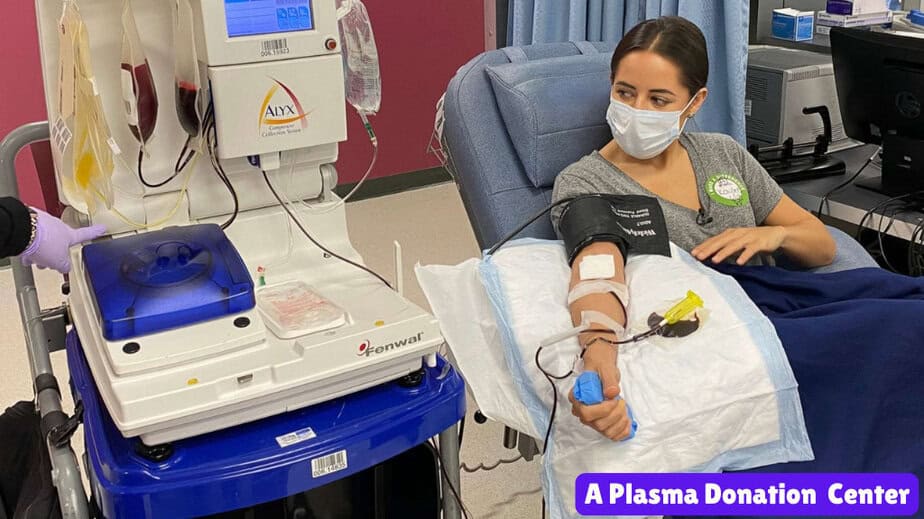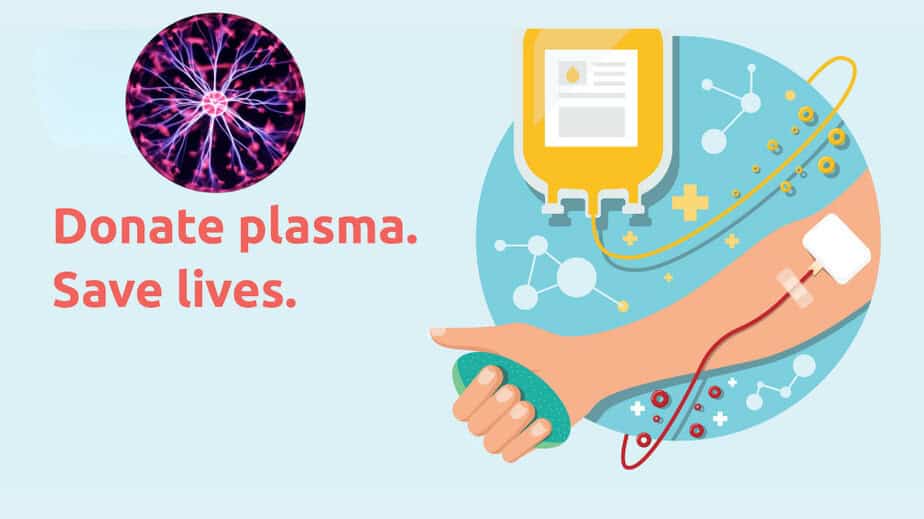The Science Behind Plasma Donation: More Than Just a Good Deed
Understanding Plasma: The Liquid Gold in Your Veins
Plasma, often referred to as “liquid gold,” is the largest component of human blood, comprising about 55% of its overall volume. It is a straw-colored fluid that serves as a medium for transporting blood cells throughout the body. Plasma contains vital proteins, electrolytes, hormones, and nutrients; it plays a critical role in maintaining blood pressure, regulating body temperature, and facilitating blood clotting. The major components of plasma include water (90% of plasma content), proteins (such as albumin, globulins, and fibrinogen), electrolytes (like sodium and potassium), and waste products (such as urea and creatinine). The unique characteristics of plasma make it indispensable in various medical treatments, highlighting its significance beyond basic bodily functions.
The Health Benefits of Donating Plasma: Boost Your Well-Being
While altruism often motivates individuals to donate plasma, there are numerous health benefits associated with the act of donating. Regular plasma donation can lead to improved health outcomes for the donor, including enhanced cardiovascular health and reduced risk of certain diseases. Many studies suggest that plasma donation encourages the regeneration of blood components, thereby stimulating the production of new cells. Additionally, the act of donating can help regulate and lower blood pressure, which is beneficial for cardiovascular health. Moreover, the process of plasma donation often entails preliminary health screenings, offering donors valuable insights into their health status. This engagement can lead to early detection of health issues, benefitting both the donor and the healthcare system as a whole.
How Plasma Donation Supports Medical Advances: A Lifesaving Contribution
Plasma donation isn’t just a civic duty; it is essential for various therapeutic treatments and medical research. The proteins harvested from plasma form the backbone of critical therapies for patients suffering from conditions such as hemophilia, liver disease, and immune deficiencies. Globally, well over a million patients rely on these life-saving treatments each year. Plasma-derived products, such as immunoglobulins and clotting factors, are irreplaceable in treating autoimmune disorders and managing severe burns, traumatic injuries, and surgical complications. Furthermore, as our understanding of diseases evolves, the need for high-quality plasma donations fuels groundbreaking research aimed at developing innovative treatments for previously untreatable diseases, making each donation a crucial gift.
What to Expect When You Walk into a Plasma Center: A Step-by-Step Experience
Preparing for Your Donation: Essential Tips for First-Time Donors
For first-time plasma donors, preparation is key to a smooth donation process. To increase the likelihood of a successful donation, individuals should stay hydrated by drinking plenty of water before their appointment. Consuming a nutritious meal that includes protein and iron can help in maintaining energy levels and ensuring that iron counts are adequate. Additionally, potential donors should be informed about the necessary identification and documentation, such as a government-issued ID and, in some cases, health insurance information or proof of residency. Mental preparedness is equally important; understanding the donation process, including potential side effects and the actual time commitment, can reduce anxiety and foster a more positive experience. By approaching the donation with awareness and readiness, first-time donors can contribute effectively while prioritizing their well-being.
The Donation Process Demystified: From Registration to Recovery
The experience of donating plasma is highly structured and designed to ensure donor comfort and safety. Upon arriving at the plasma center, individuals are greeted and taken through an initial registration that includes answering a medical questionnaire to ensure eligibility. Following this, health professionals conduct a brief physical examination, measuring vital signs and checking hemoglobin levels. Once cleared, donors are seated in comfortable recliners, where the actual donation takes place. A healthcare professional will insert a sterile needle into one arm, allowing blood to be drawn and separated into its components through a process known as plasmapheresis. This process typically takes about 30-60 minutes. After the donation is complete, donors are monitored during a post-donation recovery period, where they can enjoy refreshments to replenish lost fluids and nutrients before heading out. This thorough process highlights the sincere commitment plasma centers have towards maintaining donor safety and satisfaction.
Common Myths Debunked: What Donors Often Get Wrong
Despite the clear benefits and relevance of plasma donation, there are still widespread misconceptions that can deter potential donors. A common myth is that donating plasma is as painful as blood donation, when in fact, the process is generally quite tolerable, and many donors only experience a slight pinch. Another prevalent misconception is that plasma donation can significantly affect one’s energy levels; while temporary fatigue can occur, most individuals resume normal activities shortly thereafter. Additionally, some believe they cannot donate plasma if they have certain chronic conditions, whereas many conditions that may disqualify someone from whole blood donation do not impact plasma donation eligibility. Clear, reliable information from plasma donation centers helps dispel these myths, empowering individuals to make informed decisions based on facts rather than fear.
The Rewards of Plasma Donation: More Than Just Compensation
Why Donors Feel Rewarded: The Emotional Impact of Giving
Many plasma donors express profound emotional rewards stemming from their contributions that go beyond the financial compensation often offered. The act of giving blood and plasma creates a deep sense of purpose and connection to the community, knowing that their donation helps to save lives and improve the health of others. The psychological benefits manifest in increased happiness and fulfillment, often referred to as the “helper’s high.” Engaging in altruistic behavior activates the brain’s pleasure centers, releasing endorphins and fostering an overall sense of well-being. This mind-body connection highlights the intrinsic rewards of plasma donation, encouraging individuals to not only donate for others but also for their own mental and emotional health.
Cash or Community: Exploring the Rewards for Your Generosity
While many plasma donation centers offer compensation for donated plasma, this should not minimize the spirit of generosity behind the act. Most centers supply donors with cash payments, which serve as an incentive and acknowledgment of their valuable time and commitment. However, the financial reward varies depending on factors such as location and frequency of donation. Moreover, many plasma centers engage in local community initiatives; donation can become an opportunity for individuals to connect with organizations, participate in health fairs, or contribute to local charities. This duality of tangible compensation and community involvement creates an enriching environment for donors, underlining that their contributions matter both financially and socially. By exploring both aspects of reward, potential donors can appreciate the multifaceted impact they have on their communities.
Incentives and Membership Perks: Elevate Your Donation Experience
Many plasma centers offer an array of incentives designed to enhance the donor experience and encourage ongoing participation. From bonuses for first-time donors to loyalty programs that reward frequent donors, these perks add considerable value to the experience. Some centers also provide membership programs that offer exclusive benefits, such as priority scheduling and health screenings. Giving donors more ownership and special treatment not only incentivizes them to return but also fosters a community of regular donors who feel appreciated. Furthermore, promotional events such as contests, giveaways, and seasonal campaigns serve to engage donors, making the act of donating plasma an enriching experience that extends beyond the physical act itself.
Becoming a Lifeline: Stories of Impact from Plasma Donation
Real-Life Heroes: How Plasma Donation Changes Lives
Every plasma donor contributes to heartwarming stories of change and survival. Consider the case of a young child battling hemophilia who relied on donated plasma-derived clotting factors for treatment. Thanks to generous plasma donors, this child has been able to live a relatively normal life, attending school and participating in activities with friends that would otherwise have been risky. Each plasma donation goes beyond just boosting individual health; it can mean the difference between life and death for patients in dire need. There are countless narratives of individuals whose lives have been transformed due to the compassionate gifts of plasma donors, demonstrating that every donation truly counts and carries the potential to create real change.
Community Connections: The Role of Plasma Centers in Local Health Initiatives
Plasma centers play a significant role in local health initiatives, often serving as partners in community health events and awareness campaigns. By raising awareness about the importance of plasma donation and providing educational resources, these centers contribute to the overall well-being of the community. They frequently engage in workshops and information sessions to inform the public about the need for plasma and its medical applications. Furthermore, many centers work with local hospitals and healthcare providers to ensure that plasma is available for patients requiring immediate treatment. This interconnectedness amplifies the impact of plasma donation, as individuals realize that their contributions directly strengthen community health and resilience.
Your Plasma Is Needed: Who Benefits from Your Donation?
Understanding who directly benefits from plasma donations can serve as a powerful motivator for potential donors. Plasma is instrumental in treating various medical conditions, including immune system disorders, liver diseases, and severe burns. It is also crucial for patients undergoing surgeries or suffering from traumatic injuries, as it helps in blood clotting and maintaining volume. Moreover, hospitals and medical facilities often experience critical shortages during times of increased demand, such as natural disasters or public health crises. By donating, individuals can actively participate in addressing these urgent needs, knowing that their plasma may help save someone’s life or significantly improve their quality of life. Highlighting the human side of plasma donation fosters a deep sense of responsibility and urgency, urging individuals to step forward and lend their support when it is most needed.
Read next: 5 Things to Take Care of After Sustaining a Sports Injury

